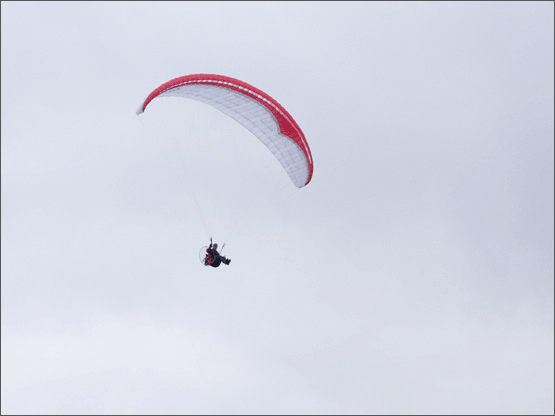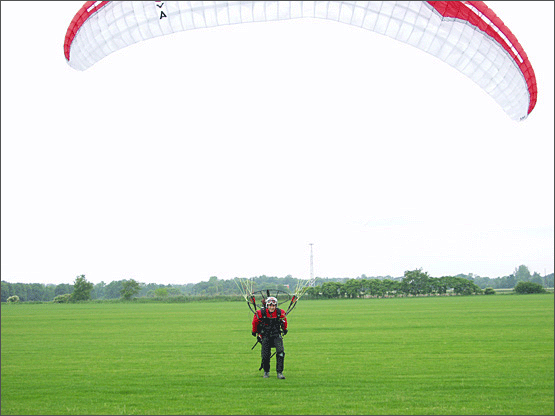The two Wasps weighed about 20lbs ready to go and the Bug (mine) 19.5lbs. True PG attachment points - no side canes/bars. They were great to thermal with. We could weigh-shift the way we paraglided.
I always wanted to have the same machine but electric.
Myself with a Wasp (sorry for the low res photos from the late 90’s:

I had shredded a windsock when I flew to close to it😆


Another prototype I designed at the time

This is the system I had designed to attach the motor, a Boxer engine.
The harness was custom made for me by SUPAIR and was based on an Acro model they had at the time. The motor was connected by 4 industrial velcro(s) and could be removed in 30 seconds from the harness, if you wanted to free-fly without the motor.
The takeoff technique was a bit different than what what standard PPG do. We had to recline a lot as soon as we could feel the thrust kicking in to bring the cage to a vertical angle and have a thrust parallel to the ground. It is kind of what standard PPG do but we had to lean back so much more. We had become used to it and was normal for us to run tilted so far back.
We were using small around 200cc Boxer engines.
I had all kinds of ideas at the time😄 and actually some people had the same ones years later and actually built PPG with cocoon harnesses.






I had posted this one before but here’s another lightweight proto I had built (under 20lbs without the SUPAIR PG harness. Note the dorsal reserve parachute with the orange handle to the right.


Sorry for the low video resolution. I actually flew with this proto Piccolo8PackTest2 iPhone - YouTube
Phil






















































